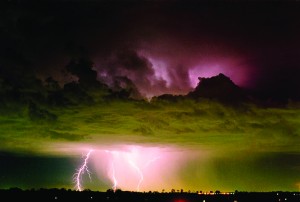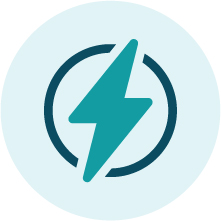Beware. Spring can usher in more than April showers. Now through the summer months, thunderstorms can quickly roll in and tornadoes can touch down, often during the afternoon and evening hours, according to researchers at the National Oceanic and Atmospheric Administration’s (NOAA) National Severe Storms Laboratory.
Follow these tips from NOAA and the American Red Cross to keep you and your home safe when tornadoes and severe thunderstorms come your way.
• Prepare for high winds by removing diseased and damaged trees or limbs.
• Listen to local news or National Weather Service broadcasts to stay informed about tornado watches and warnings.
• If in a mobile home, immediately head to a sturdy shelter or vehicle. Mobile homes, especially hallways and bathrooms, are not safe places to take shelter during tornadoes or other severe winds.
• Designate a family meeting place for shelter during and after a storm. If possible, go to your home’s basement, a small interior room, or under stairs on the lowest level. Also, have a battery-operated weather radio handy along with emergency supplies.
• Unplug your electronics. Avoid using electrical equipment and corded telephones.
• Remember that there is no safe place outside during a severe storm. If you are caught in a storm while on the road, the American Red Cross urges drivers to turn their headlights on, try to safely exit the roadway, and park. Stay in the vehicle with your seat belt on and turn on the emergency flashers until the heavy rain ends. If thunder and lightning is occurring, avoid touching metal or other surfaces that conduct electricity in and outside the vehicle.
• Move or secure lawn furniture, trash cans, hanging plants or anything else that can be picked up by the wind and become a projectile.
• Stay safe after a storm. Remain indoors at least 30 minutes after the last clap of thunder. Also, stay away from downed power lines and avoid flooded areas; power lines could be submerged and still live with electricity. Report them to to your local electric co-op immediately.
Learn more about storm safety at http://www.nssl.noaa.gov/education/svrwx101/thunderstorms/.
Sources: The National Oceanic and Atmospheric Administration’s National Severe Storms Laboratory; American Red Cross
B. Denise Hawkins writes on consumer and cooperative affairs for the National Rural Electric Cooperative Association.




